
 |
|
#16
|
||||
|
||||
|
Here are a couple more pics of cutting out and comparing the profiles;
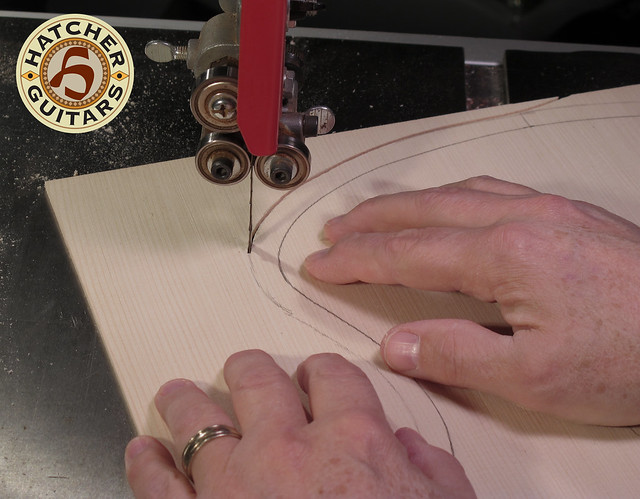 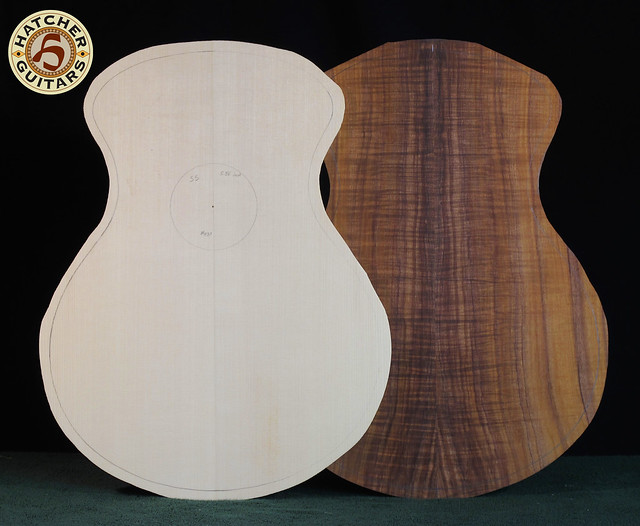 Thanks
__________________
Mark Hatcher www.hatcherguitars.com “"A conclusion is the place where you got tired of thinking". Steven Wright |
|
#17
|
|||
|
|||
|
Dang, that's some nice koa there Mark!
__________________
Rod True, aspiring luthier My current project A guitar I built for my Father in Law The Celtic Beauty - The Epic Journey True SJ - #9 |
|
#18
|
||||
|
||||
|
Hello,
I've been spending a lot of time looking at classic guitars as I am doing my research for this nylon crossover. What I've learned is that a classical guitar typically has a smaller soundhole than a similarly sized steel string. What I've found is steel string models, no matter the body size, tend to have same size holes. After experimenting I find my Penelope does sound better with more of an "optimized" hole to fit it's size. Now that I've got that settled I can make the rosettes and they are both are going to be the same size. I'm going with segmented Koa with black white black purfling. The fretboard will be Ebony so I think it would look good to darken the Koa rosette and a little fire takes care of that. 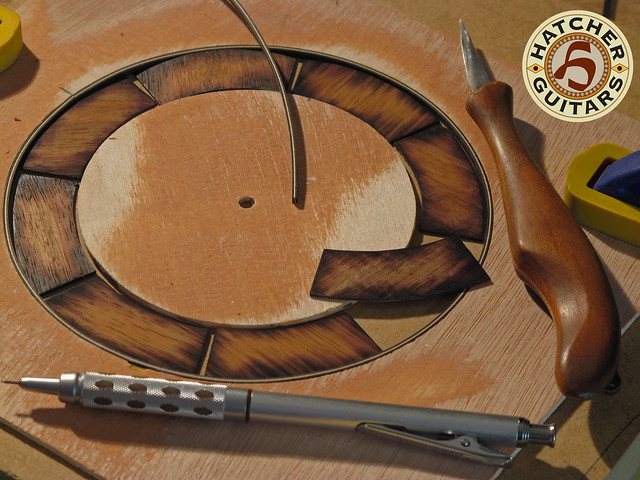  Thanks for viewing.
__________________
Mark Hatcher www.hatcherguitars.com “"A conclusion is the place where you got tired of thinking". Steven Wright |
|
#19
|
|||
|
|||
|
Wow cool - did I read your post correctly that you burned the Koa to make that darkened effect?
Another question. In your prior post, it looks like you did rough cuts around your top and back shapes. How do you then get perfect edges down to size? Just sanding?
__________________
Rock on wood... Taylor 314ce [2005] PRS CE22 [1995] |
|
#20
|
||||
|
||||
|
Quote:
As far as cutting the tops and bottoms down to size, this is typically done after they are glued down to the sides. From there you run a flush cut router bit around. Actually, there are a few tricks in doing that. Check in on the building section before trying it at home!
__________________
Mark Hatcher www.hatcherguitars.com “"A conclusion is the place where you got tired of thinking". Steven Wright |
|
#21
|
|||
|
|||
|
uf, it's gonna be very sexy body
 funny, i've just been reading a book about Hawai, there's one whole chapter about plants and a lot of about koa trees (no mention about the use for music instruments funny, i've just been reading a book about Hawai, there's one whole chapter about plants and a lot of about koa trees (no mention about the use for music instruments  . there are some pictures of koa with bizzare multiple trunks of which i would never say that they could be used for guitars... is it hard to find koa tress with a trunk(s) suitable for guitars? . there are some pictures of koa with bizzare multiple trunks of which i would never say that they could be used for guitars... is it hard to find koa tress with a trunk(s) suitable for guitars?
__________________
http://www.youtube.com/user/IvanBorcin/videos |
|
#22
|
||||
|
||||
|
Quote:
Koa wood has been used for musical instruments (along with many other things) for quite a while. I think gnarled and twisted trees make more interesting pictures and that's probably why those pictures were chosen for your book (as well as the picture I posted) Koa trees usually grow pretty straight. Here are some young ones in a stand along the road;  Koa trees grow fast and huge. They have been over harvested though, and grazing farm animals tend to kill them by eating the bark off. Luckily, there is a strong movement in Hawaii to replant the trees and, as I said, they grow fast. By the way, I checked out your You-Tube link. Your a fabulous guitar player! Thanks for putting that up.
__________________
Mark Hatcher www.hatcherguitars.com “"A conclusion is the place where you got tired of thinking". Steven Wright |
|
#23
|
|||
|
|||
|
Mark, looks like we have some great builds to follow here. Your other build thread had some great work and pics to help someone like me to learn alittle about approach and methods of work, thanks for sharing this.
As a long time woodworker I know what you mean by not wanting to resaw that koa and let someone who does it better do it, sometimes hard for us to admit someone else can do it better. What a great piece of wood, almost seems like sacrilege to put a saw blade to it. But someone had to have the courage to do it, now it will serve a higher purpose, other than just looking fantastic! OMG what a hunk of wood. Bruce, |
|
#24
|
||||
|
||||
|
Quote:
I see you've just signed up to the forum-Welcome! There are a lot of great builds that get displayed here. Your right about sending the board out to someone else. It was such a great piece and I just didn't want to risk not getting a maximum yield. My only regret is I didn't have it sent from Hawaii to California where it was resawed. It would have saved 6,000 miles of travel if I didn't have it come to me in NJ first! I guess I couldn't wait to see it.
__________________
Mark Hatcher www.hatcherguitars.com “"A conclusion is the place where you got tired of thinking". Steven Wright Last edited by Mark Hatcher; 01-16-2012 at 06:35 PM. |
|
#25
|
||||
|
||||
|
Hi Everyone,
Time to post some more pictures. These next three are gluing and shaping the back graft. This cross grain strip reinforces the seam where the two back plates are joined: 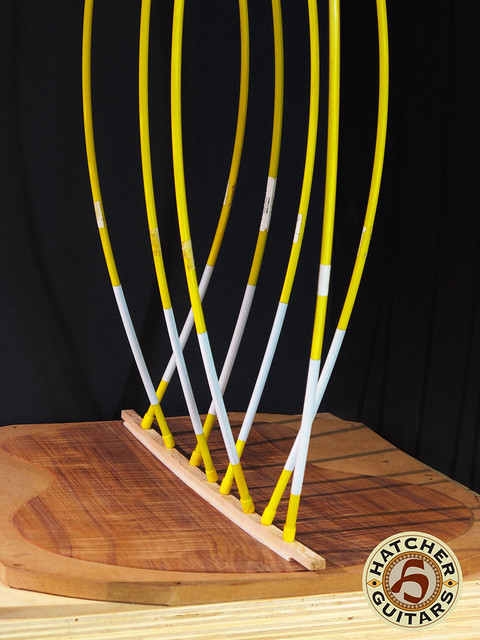  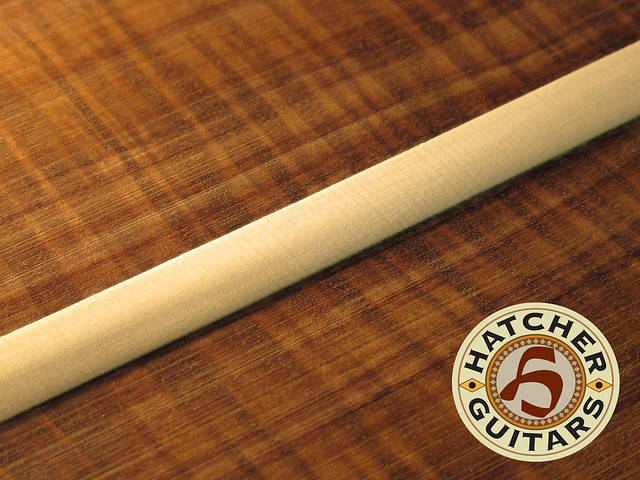 Here is a picture of the two tops. So far they are as identical as I can make them:  The bracing for the crossover is an area that has to be a lot different. The X bracing for a steel string guitar helps bring out the base from the steel strings. A nylon string guitar is braced in such a way as to bring out the high end because nylon strings tend more to the base side.  Thanks for viewing!
__________________
Mark Hatcher www.hatcherguitars.com “"A conclusion is the place where you got tired of thinking". Steven Wright |
|
#26
|
|||
|
|||
|
Very nice work... look forward to hearing about it.
|
|
#27
|
||||
|
||||
|
I'd like to talk a little about braces. Next to the soundboard the bracing is one of the things that can really effect the sound and responsiveness of a guitar.
The quality of the brace wood is very important as well as the cut and orientation of the grain. Braces that have the grain running true to the length of the brace are best. They are stronger, less likely to crack, and ultimately help the guitar sound better. That is why I take the time to split out my brace stock. By splitting the wood you are sure to eliminate the grain run out you may get otherwise. 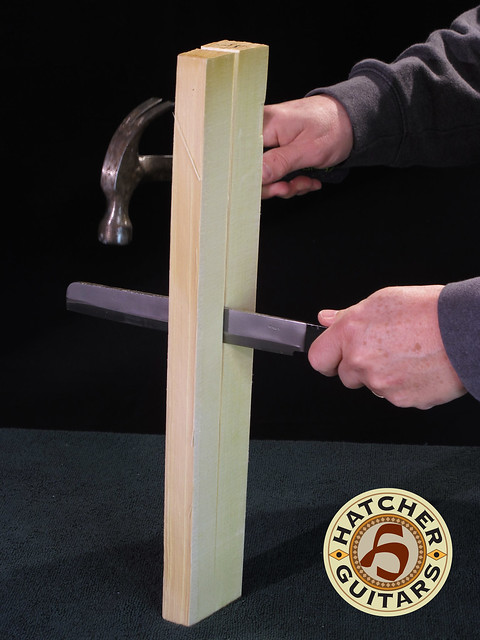 Before there were sawmills in America boards were split from logs. Even after sawmills were available the tradition of splitting wood out was still used when the job called for maximum strength and reliability, especially when things needed to be kept light, like wagon wheel spokes or chair rails. "Riven" wood has been the name for quality and strength. It is also one of those traditions still carried on in the shop of a good handbuilder. 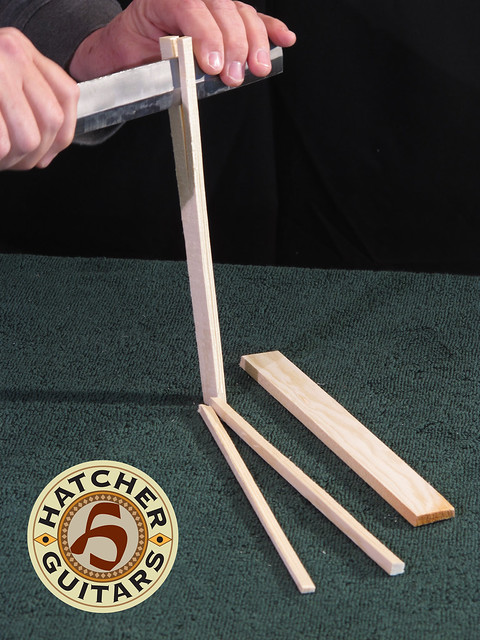 Splitting wood is usually done with a splitting froe. The froe is dull, but not blunt. It's size is appropriate to the job at hand, whether it's wood for boards, archery bows, or wagon spokes. This tool is small for things like splitting bamboo for fly rods or spruce for guitar bracing. 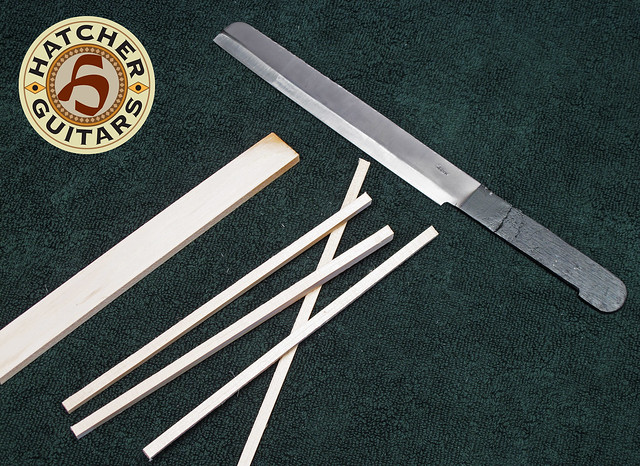 So, next time you take a tour of a guitar factory and are feeling a little cocky, ask them where they keep the splitting froes! Thanks for following my build.
__________________
Mark Hatcher www.hatcherguitars.com “"A conclusion is the place where you got tired of thinking". Steven Wright Last edited by Mark Hatcher; 02-04-2012 at 12:35 PM. |
|
#28
|
||||
|
||||
|
Hello,
Let's stay on braces a little longer. 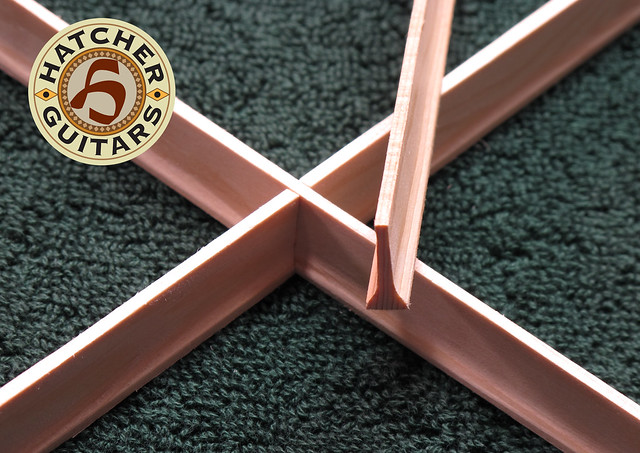 I have some unique brace designs that I feel add to the sound of my guitars. First would be the profile. I believe this profile gives me the best brace to soundboard adhesion surface area and also provides more resistance to the twisting forces you get when using lattice bracing.  I use a pretty complex mitre joint where braces cross. This eliminates the extra weight of having a box type joint. I also eliminates the hard spots you get from over-built joints. Again, this helps in voicing the guitar and getting predictable results from lattice bracing. 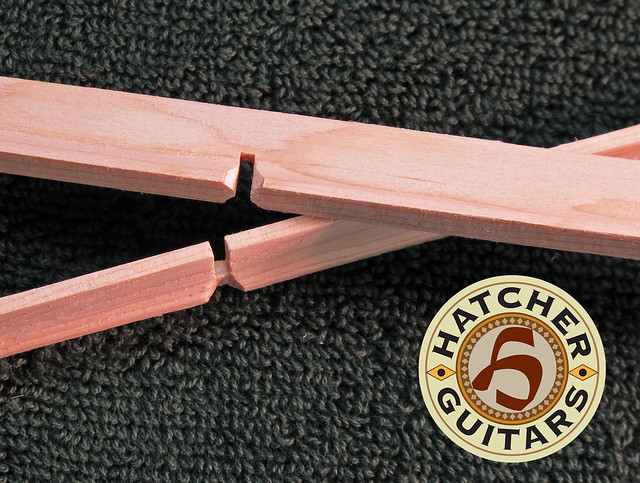 Finally, none of this is of any help unless the time is taken to be sure that we have tight fit.  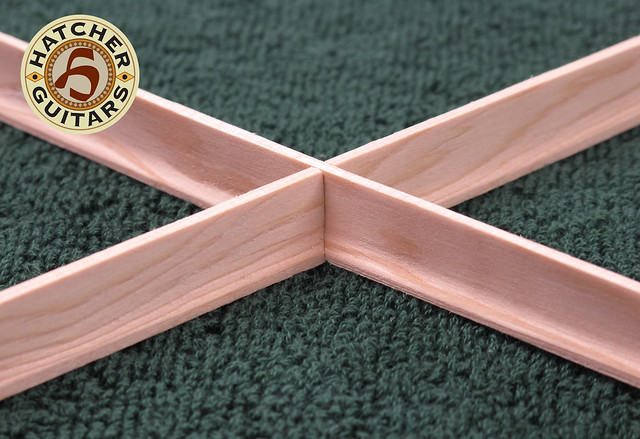 The brace height is determined during the voicing proccess and each joint is then finally capped for additional strength. Thank you for viewing. Comments are welcome.
__________________
Mark Hatcher www.hatcherguitars.com “"A conclusion is the place where you got tired of thinking". Steven Wright Last edited by Mark Hatcher; 02-08-2012 at 03:44 PM. |
|
#29
|
|||
|
|||
|
Hi Mark,
I take it the lattice bracing is for the steel-string top, as your schematic for the nylon-string shows a fan-brace pattern. Or is this your back bracing? Drew |
|
#30
|
||||
|
||||
|
Nice, clean workmanship Mark. And lovely Koa...wow.
Steve |